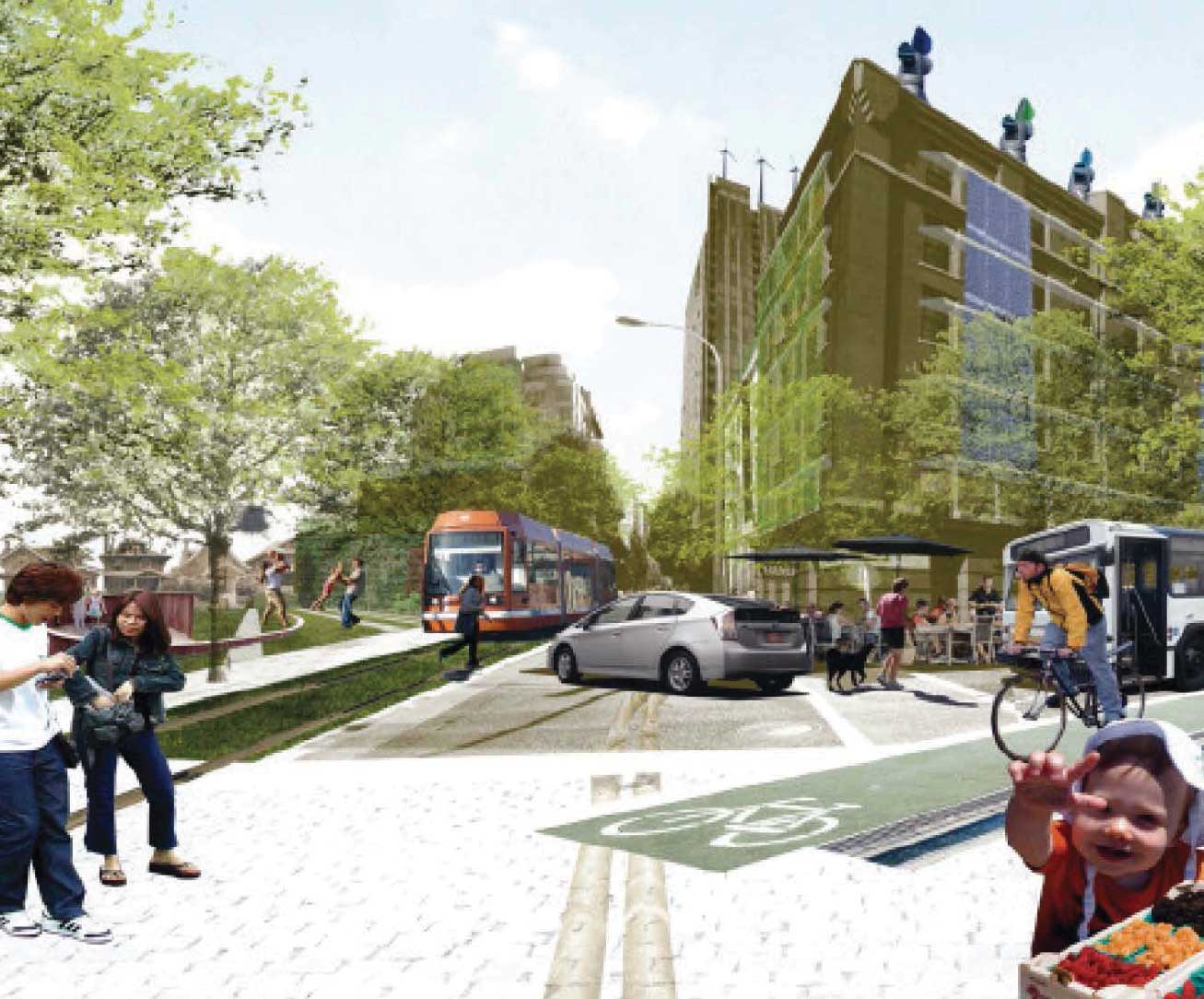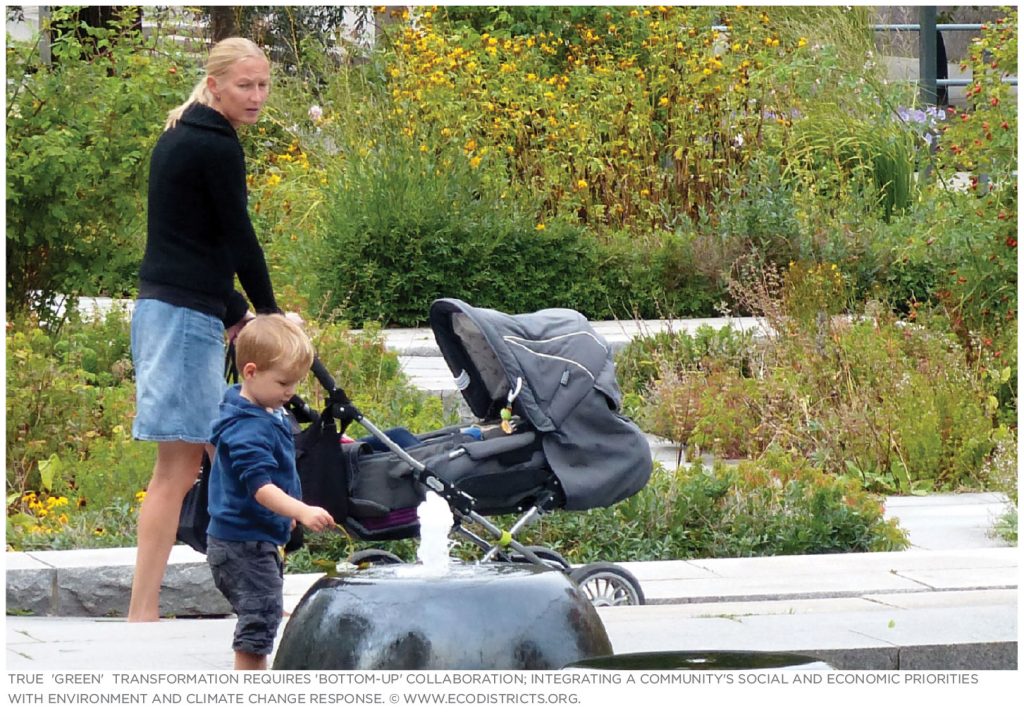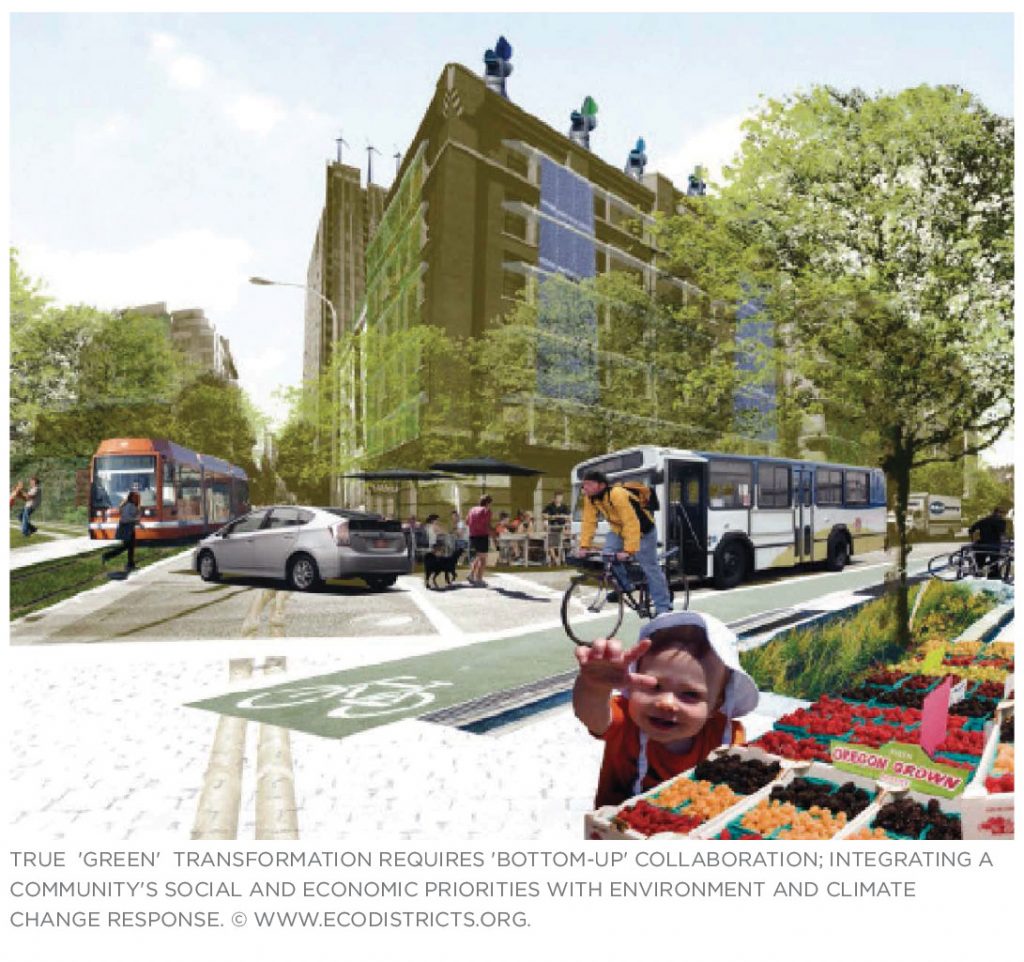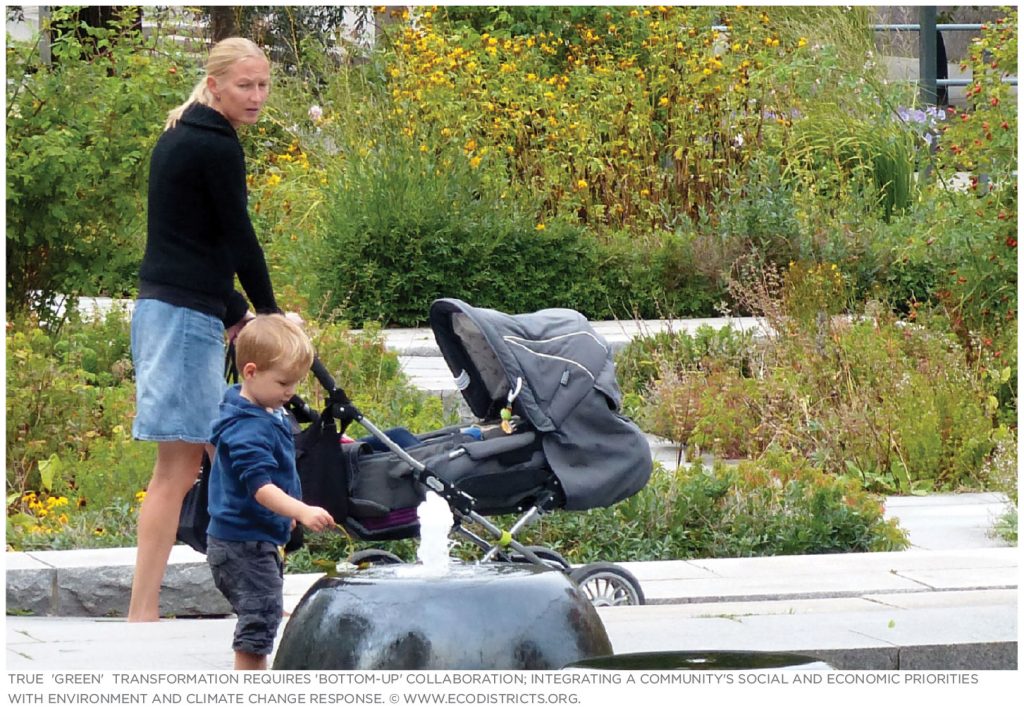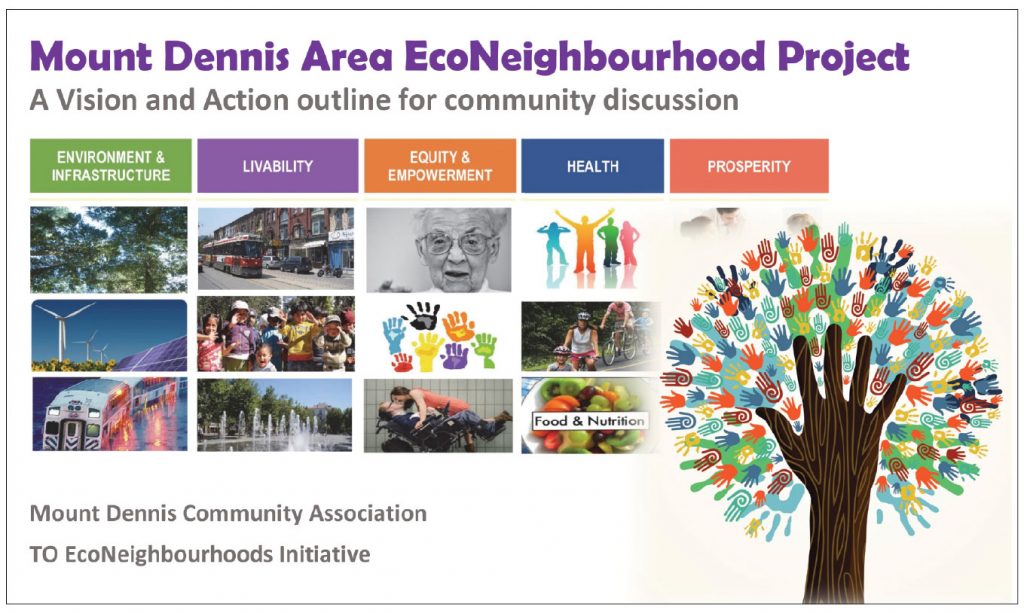Towards the Sustainable Transformation of Existing Neighbourhoods
Triple Threat or Triple Bottom Line. Environment, Equity, Infrastructure. These are three key challenges standing in the way of reshaping Canada’s aging urban [and suburban] fabric into more livable and resilient districts.
By Wayne Olson
Traditional responses to these problems have been compartmentalized and resource constrained in a way that is increasingly inadequate for the complex task of the so-called ‘triple bottom line’ [economy, society, environment] regeneration of existing neighbourhoods:
- • Our cities, which are THE primary generators of climate-changing greenhouse gases globally, are being increasingly buffeted by climate change related events such as ice storms, flooding, heat waves and pests like the Emerald Ash Borer. These environmental stresses typically bring tweaks to building codes and modest green building standards that have little or no impact on existing built assets.
- • Urban inequity is a growing issue in many cities. Almost a third of children in Toronto grow up in poverty, with many living in poorly maintained rental housing. A key difference from post-war Canada is that today’s poverty is increasingly entrenched, meaning that our cities risk fostering a long-term “underclass” that remains in place despite a pinch of social program funding or a dash of affordable housing dollars from time to time
- • Canada`s civic infrastructure – just roads and pipes – carries a $170 Billion state-of-good-repair deficit. Unlike many U.S. or European jurisdictions [and due in part to shrinking support from upper-tier governments over the last four decades] most of the financial burden rests on the local property tax base – inadequate even before adding the financial burden of new infrastructure to serve urban growth and resilient infrastructure responding to climate change.
These present-day threats of infrastructure failure, environmental vulnerability and growing inequity might be characterised as the ‘perfect storm’ of challenges for cities and their existing neighbourhoods. Compounded by increasing urbanization and smart growth plans that limit greenfield development, we have a perfect storm inside a pressure cooker.
The good news? This may be the nexus that drives innovation and cross-sector collaboration allowing us to transform post-war neighbourhoods into connected, healthy, socially and culturally vibrant, low carbon, prosperous communities – the building blocks for future great cities.
Old Way – New Way
Cities are increasingly intricate social, technical and economic ecosystems where everything connects. Intuitively, it is easy to understand that overly simplistic decision making may ignore important issues and ‘externalities’ leading to unanticipated negative effects, and to missed opportunities to synergistically support other urban priorities.
Wayne Olson is a Toronto-based architect, real estate development consultant, and coordinator to the EcoNeighbourhoods Initiative. He is an advisor to EcoDistricts in the development of their 2015 Global Protocol.

